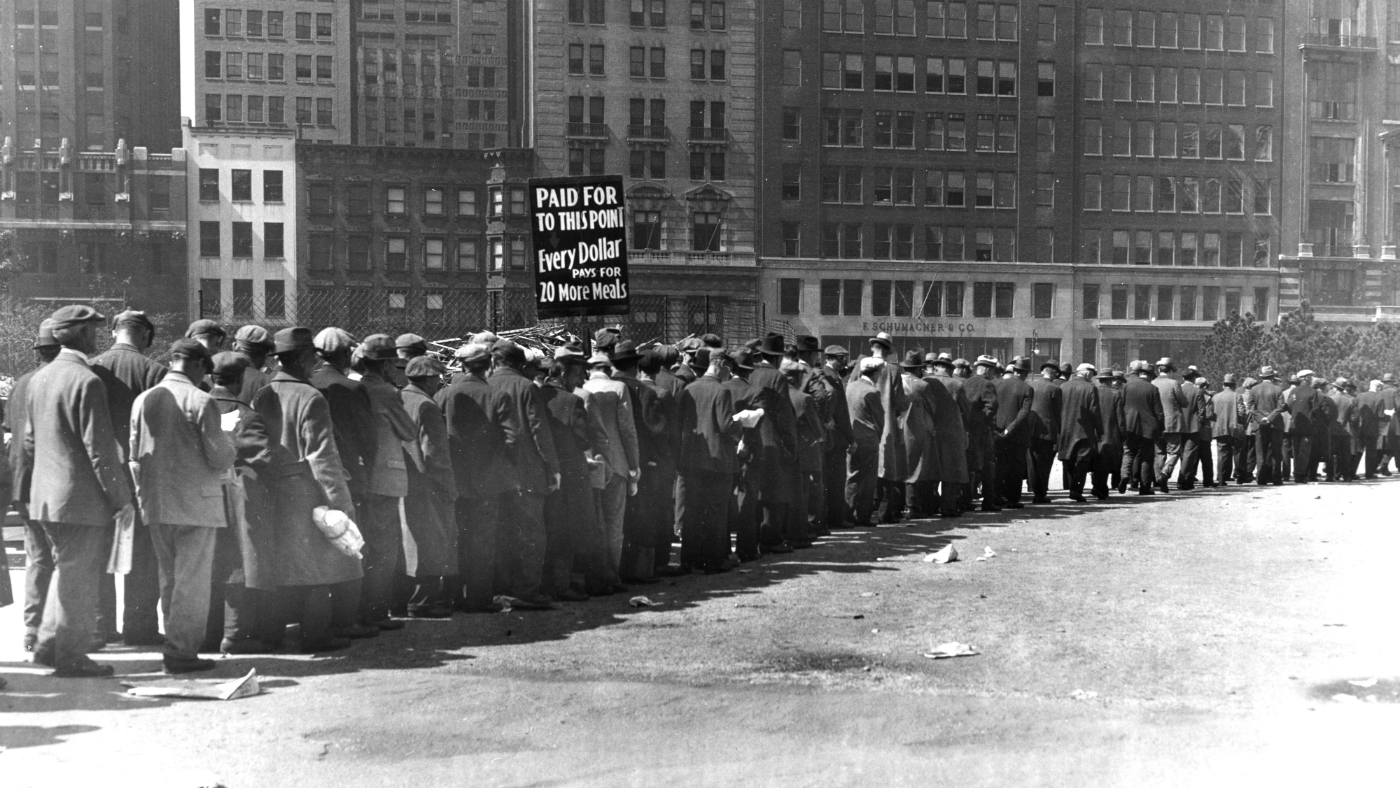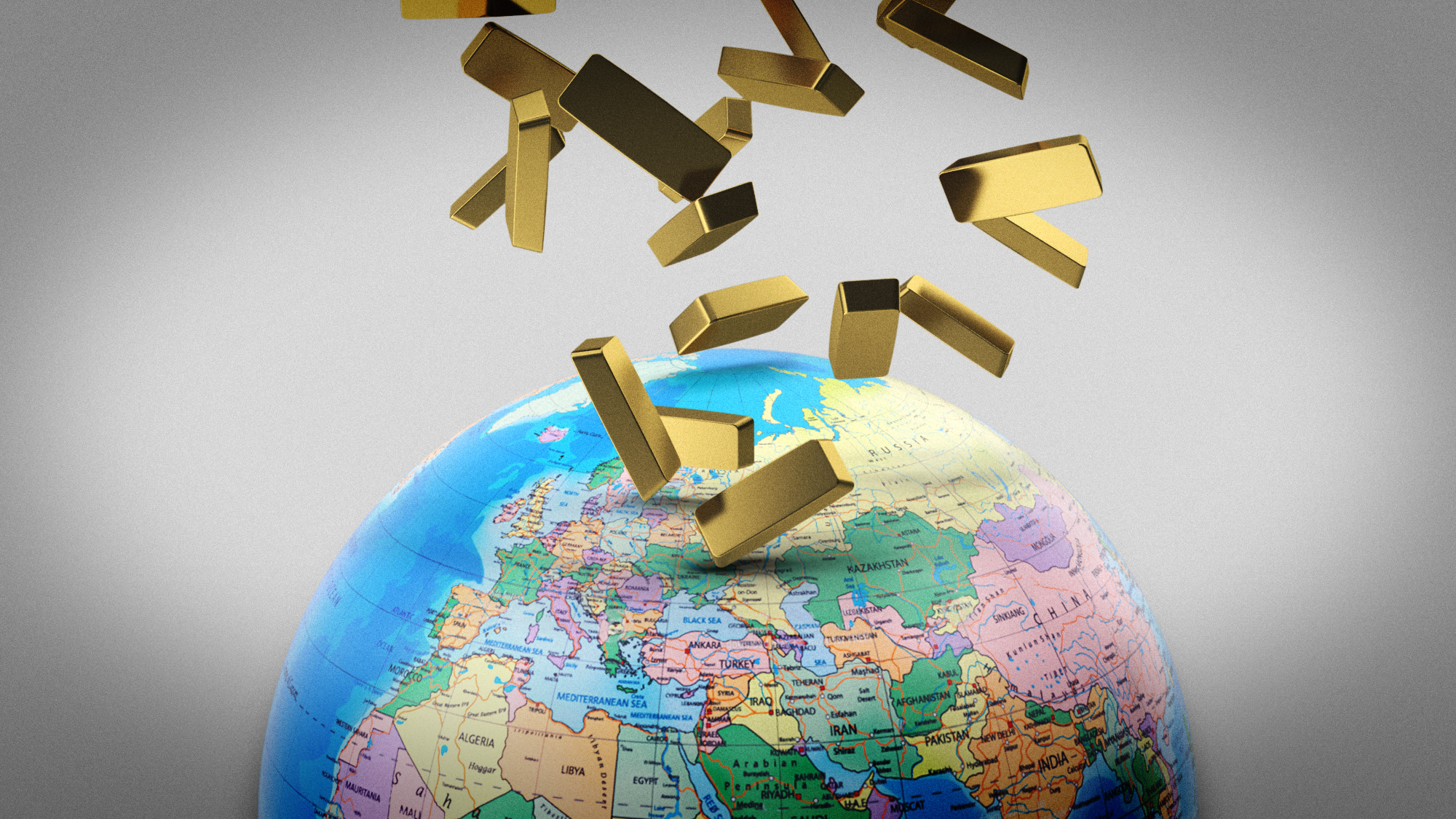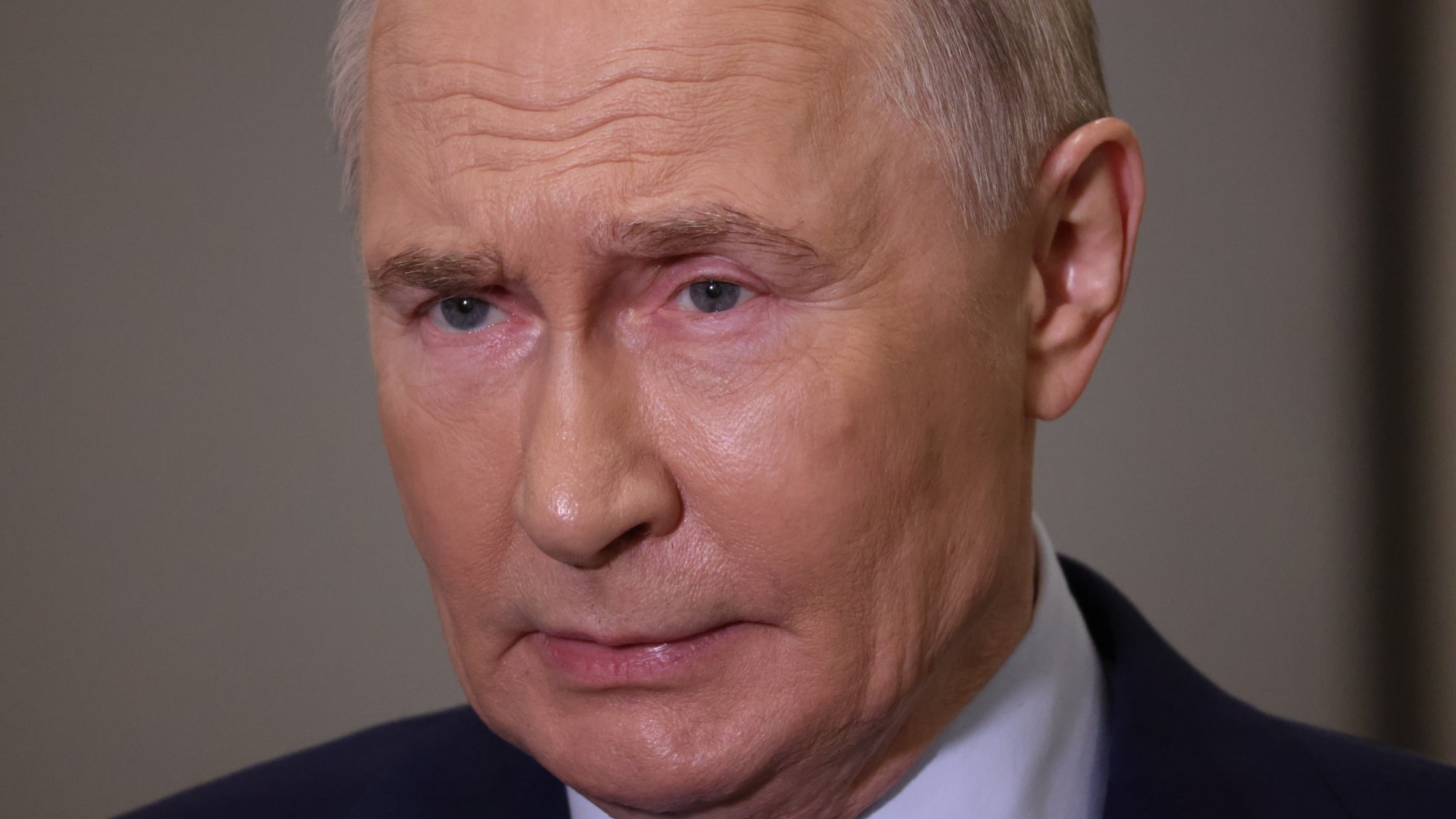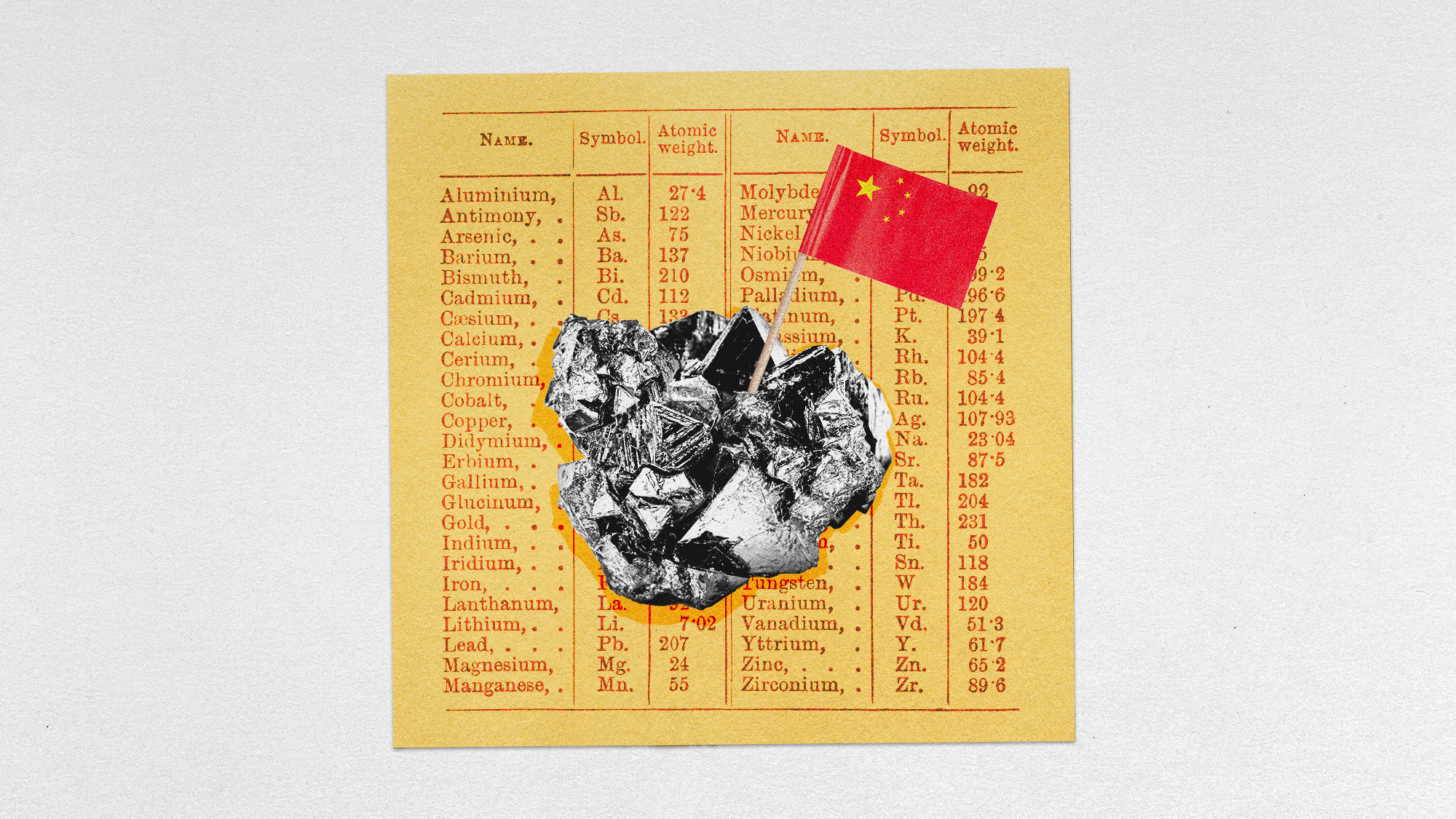The Great Depression: what was it and how did it start?
International Monetary Fund warns of worst depression since 1930s due to coronavirus shock

The coronavirus pandemic will turn global economic growth “sharply negative” this year, according to the head of the International Monetary Fund (IMF).
Kristalina Georgieva has warned that the world is facing the worst economic crisis since the Great Depression of the 1930s, while forecasting that 2021 would only see a partial recovery.
The comments came as the US reported that the number of Americans seeking unemployment benefits had risen for the third week by 6.6 million. The total over that period is now up to more than 16 million Americans, the BBC reports.
The Week
Escape your echo chamber. Get the facts behind the news, plus analysis from multiple perspectives.

Sign up for The Week's Free Newsletters
From our morning news briefing to a weekly Good News Newsletter, get the best of The Week delivered directly to your inbox.
From our morning news briefing to a weekly Good News Newsletter, get the best of The Week delivered directly to your inbox.
“Just three months ago, we expected positive per capita income growth in over 160 of our member countries in 2020,” Georgieva said.
“Today, that number has been turned on its head: we now project that over 170 countries will experience negative per capita income growth this year. In fact, we anticipate the worst economic fallout since the Great Depression.”
So what was the Great Depression - and what triggered it?
The Roaring Twenties
A free daily email with the biggest news stories of the day – and the best features from TheWeek.com
During the 1920s, the US economy expanded rapidly, and the nation’s wealth more than doubled between 1920 and 1929 - a period that has been dubbed the Roaring Twenties, says History.com.
During that time, the stock market, centered at Wall Street in New York City, was the scene of “reckless speculation”, and a spike in consumer credit availability gave middle-class Americans the means to buy stocks, the website explains.
On 24 August 1921, the Dow Jones Industrial Average stood at 63.9, says MoneyWeek. “By the peak, on 3 September, 1929, it had risen to 318.17”. But those stratospheric levels could not be justified by expected future earnings.
Crash
On 24 October 1929, nervous investors began selling overpriced shares on an enormous scale, and the stock market crashed. A record 12.9 million shares were traded in just one day, known as Black Thursday.
Five days later, on 29 October, or Black Tuesday, a further 16 million shares were traded as another wave of panic swept through the stock market. As a result, millions of shares were rendered all but worthless.
Many people who had bought on credit fell into debt, and the number of foreclosures and repossessions increased rapidly. The global adherence to the gold standard, which joined many countries in a fixed currency exchange, helped spread economic woes across the world.
Tariffs
Trade tariffs were also a key factor in the events that helped cause the Depression. In the years leading up to 1929, American farmers had been struggling as a result of depressed agriculture prices, reports financial news site Marketplace. Foreign competition is now widely agreed to have played little part in the issue, meaning tariffs would not solve the problem, yet “farmers still wanted relief, and politicians still wanted to help - or appear to be helping”, the site adds.
The Smoot-Hawley Tariff Act was enacted in 1930, when the Depression had already begun, and imposed import tariffs on thousands of goods coming into the US, crippling the economy.
Despite being enacted after the crash, the Act “substantially contributed to the stock market collapse of 1929, because traders saw it coming”, according to Fortune.
Doug Irwin, author of Peddling Protectionism: Smoot-Hawley and the Great Depression, says that the Bill was intended to raise employment and secure the Midwestern farm vote in the short term, and that politicians did not expect the financial implications to be so great.
“Tariffs aren’t just harmful for the world economy,” Irwin adds. “They really breed ill will among nations.”
According to Marketplace, the Bill “confirmed what some call the Golden Rule of Protectionism: tariff unto others as you would have others tariff unto you”, and enormous tariffs were placed on American exports bound for Canada and Europe in retaliation.
The result was soaring unemployment rates, reaching 25% by 1933, and years of misery for millions of Americans.
–––––––––––––––––––––––––––––––For a round-up of the most important stories from around the world - and a concise, refreshing and balanced take on the week’s news agenda - try The Week magazine. Start your trial subscription today –––––––––––––––––––––––––––––––
A second Great Depression?
Oxfam has warned that the economic fallout from the spread of Covid-19 could force more than half a billion more people into poverty.
By the time the pandemic is over, the charity predicted, half of the world’s population could be living in poverty.
According to the BBC, Georgieva did give some hope, saying that if the pandemic eased in the second half of 2020, the IMF expected to see a partial recovery next year.
But she also cautioned that the situation could worsen.
“I stress there is tremendous uncertainty about the outlook. It could get worse depending on many variable factors, including the duration of the pandemic,” she said.
-
 Phish food for thought: Ben & Jerry’s political turmoil
Phish food for thought: Ben & Jerry’s political turmoilIn the Spotlight War of words over brand activism threatens to ‘overshadow’ the big ice cream deal
-
 Coffee jitters
Coffee jittersFeature The price of America’s favorite stimulant is soaring—and not just because of tariffs
-
 What a rising gold price says about the global economy
What a rising gold price says about the global economyThe Explainer Institutions, central banks and speculators drive record surge amid ‘loss of trust’ in bond markets and US dollar
-
 US mints final penny after 232-year run
US mints final penny after 232-year runSpeed Read Production of the one-cent coin has ended
-
 Argentinian beef is at the center of American farmers’ woes
Argentinian beef is at the center of American farmers’ woesThe Explainer ‘It feels like a slap in the face to rural America,’ said one farmer
-
 Will latest Russian sanctions finally break Putin’s resolve?
Will latest Russian sanctions finally break Putin’s resolve?Today's Big Question New restrictions have been described as a ‘punch to the gut of Moscow’s war economy’
-
 China’s rare earth controls
China’s rare earth controlsThe Explainer Beijing has shocked Washington with export restrictions on minerals used in most electronics
-
 The struggles of Aston Martin: burning cash not rubber
The struggles of Aston Martin: burning cash not rubberIn the Spotlight The car manufacturer, famous for its association with the James Bond franchise, is ‘running out of road’


